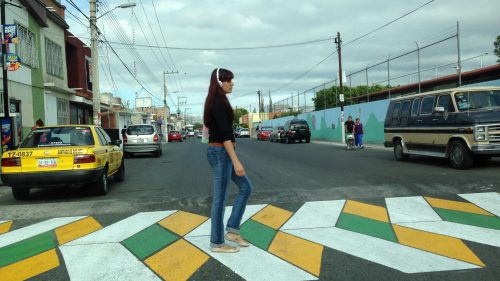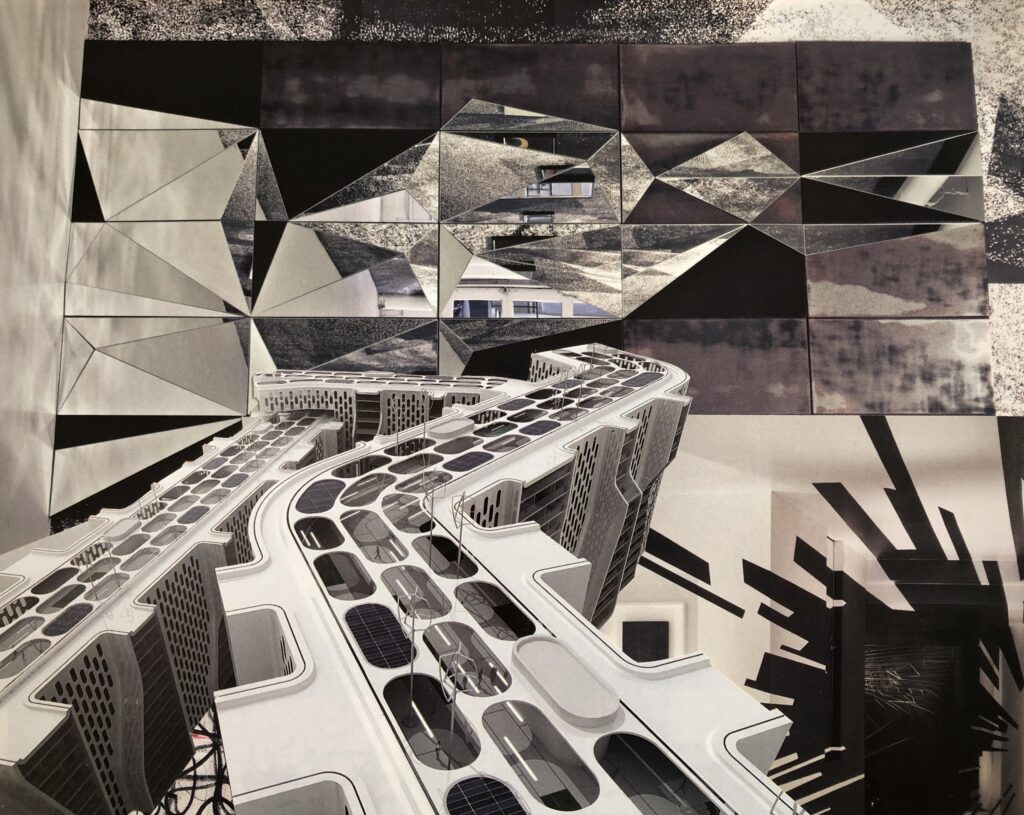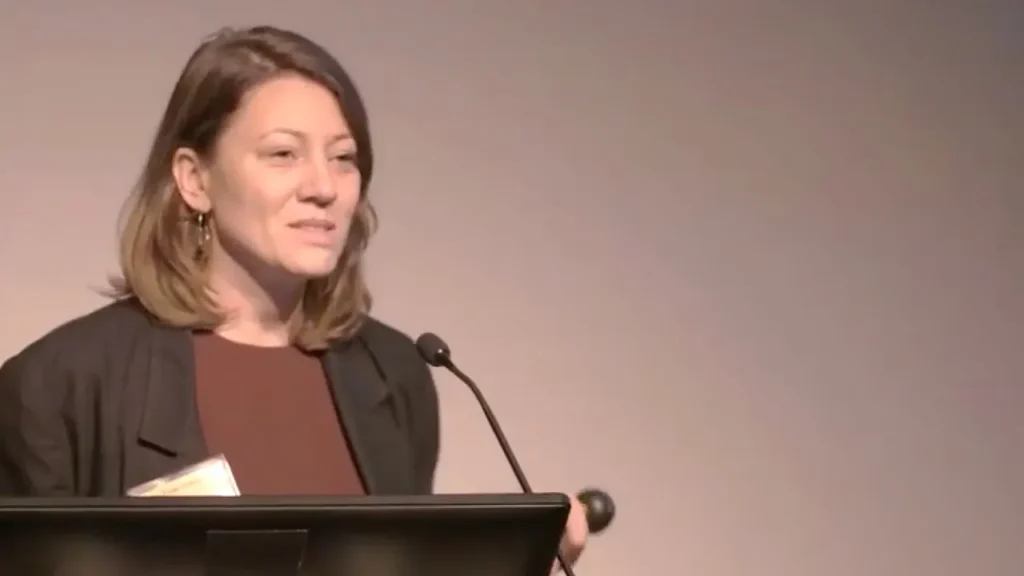1. Introduction
In seeking geometrical guidelines for design that will guarantee a healing environment, one is drawn to certain very specific features. These have been discovered and re-discovered over the ages: they have nothing to do with style, but are defined rather by mathematical properties. It is convenient to summarise these qualities so that any practitioner may apply them. The crucial justification — that buildings satisfying these geometrical qualities are more healing to the user in the long-term — is now beginning to be documented by neurological experiments1,2,3.
This paper outlines some of these design rules, and relates them to mathematical fractals and the theory of complexity. It is not necessary that an architect or urban designer know the underlying mathematics. Nevertheless, since design has for decades been influenced by personal caprice, political ideology, and irrelevant images, it is crucial to point out that the design tools presented here are science-based. Although they are independent of style, it is unavoidable that the representation of organised complexity — the essence behind the healing effect — points more to traditional architecture and away from industrial modernism4.
2. The necessity for, and interaction among different structural scales
What interests us here is the dependence of distinct scales upon one-another5,6 . Larger-scale structures can arise from combining smaller-scale units in a coherent manner. The generating symmetries are determined by adapting to the design forces. This is an essential mechanism for building organised complexity that is valid across all scales. Formal design could be useful for reducing randomness through ordering, but should not be imposed (as was the case during much of the 20th century). The larger scales in a hierarchy thus invent new information not present in the smaller units, so that the structure shows emergent properties.
At the same time, large-scale units by themselves cannot define a coherent design. Adapting to forces acting on all scales (a necessity for natural forms as well as in traditional and vernacular architectures), units have to accommodate a variety of forces acting on scales both smaller and larger than themselves. This requires plasticity and adaptation of larger forms so as to create a supportive framework on a smaller scale. Thus, adaptation necessarily generates smaller scales.
The corollary is also true: ruling out the smaller scales for stylistic or dogmatically ideological reasons guarantees that the forms can never adapt to all the design forces of the problem. You either adapt to the system’s needs, or ignore them to impose your own design idea. This conclusion contradicts one of the founding principles of modernism, but there is no way to deny it.
3. Complexity, fractals, and biophilia
Ever since the early 20th century, the overwhelming influence of industrialisation and mass-production (and its associated way of thought) imposed changes on design that marked world architecture. This determining phenomenon of the architectural profession is best understood from the point of view of complexity.
If an architect is convinced to try and use organised complexity again in architecture, there are several handy tools available. One set of methods comes from mathematical fractals7,8, which are objects that repeat similar patterns on increasing and decreasing scales. The idea here is to situate scaling symmetry at the heart of design, but only in an approximate, adaptive manner. Introduce many different scales in a structure — as required to make it more adaptive to the users — and strive for coherence across different scales. Practical design tools using fractals can make a design healthier for the user, since they generate biophilic patterns4,9.
Another, related set of methods was developed by Christopher Alexander when he discovered what geometrical properties characterise organised complexity in all systems. He has distilled a working toolkit into his “Fifteen Fundamental Properties”5,10, which are essential features of both natural and man-made coherent systems. One property is scaling hierarchy; another is the need for contrast; yet another is the presence of abundant local symmetries but the relative insignificance of an overall symmetry, etc. A designer can use these either as tools to help guide the project towards increasing coherence; or as a check to see that competing design forces are properly accommodated.
A student might well ask: where have these fifteen morphological properties been all along for the past century of architectural training? They seem far too important to be ignored; yet there is no mention of them anywhere. My answer will surprise some. Designers and architects have indeed developed an intuitive grasp of the fifteen properties, but only in order to violate them. The reason is that innovation in design has for the past many decades been judged by how far it deviates from and opposes natural order. Thus, anybody wishing to distinguish their designs from nature necessarily does the opposite of the fifteen properties11 , whose cumulative effect is organised complexity.
Having worked with Alexander for years, I have tried to relate his fifteen properties to organising concepts in mathematics and physics to get a better grasp of their universal nature. An interested reader can follow those connections with my own “Three Laws of Architecture”6. Those postulate the essential need for a scaling hierarchy, how units couple through contrast, and how large-scale order is established through symmetries and alignment.
4. Organised versus disorganised complexity
All of these ideas — Alexander’s “fifteen properties”, my “three laws”, biophilic patterns, scaling coming from mathematical fractals, rules for the generation and organisation of complexity — are mutually-supporting, complementary aspects of a new and comprehensive design method. New in that it differs from both the early 20th century modernist and the late 20th century postmodernist and deconstructivist design typologies, yet not really new since it relates strongly to traditional design methods. Nevertheless, these new design tools are not meant to reproduce traditional buildings, but to create new, innovative structures that adapt to human use and sensibilities5,12.
Fractal patterns and cellular automata are capable of generating a new type of mathematical ornament13,14. Biophilic information is mimicked using colour, detail, variation (symmetry breaking), curves, and variety of materials within adaptive design rules. Lacking this range of scales in organised complexity from 1 mm – 20 cm, even the more interesting buildings of the past few decades are disconnected from the small scale, and hence from intimate human experience.
Every design problem has to organise competing forces acting on many different scales: adapting the design to them generates emergent solutions incorporating a high degree of organised complexity. This complexity evolves from the process of adaptation. While there is no unique end-result, there are only a relative handful of optimal designs, which could however look very different5. They all have in common a high degree of organised complexity that accommodates structural integrity, activities, and sustainability of the form.
When we instead see complexity imposed for reasons of fashion, having nothing to do with the multiple design forces, something is not right. The built configuration will always be at odds with the normal forces of the situation, which can never be satisfied. Form contradicts function. This much may be suspected from the homogeneous forms of excessively formal design6. Some contemporary buildings have a more subtle contradiction because there is clearly complexity in the built form, yet this complexity is just as arbitrary for function as in the minimalist case. But now it’s deceptive because it “looks” complex.
Disorganised complexity tends to be arbitrary, random, and wilful15. It tires us, because we try to find meaning where none is present. There is an additional danger with injected random complexity, because it easily creates disturbing imbalances. Our experience of symmetries depends upon physiology: the vertical axis is tied to our inner-ear mechanism, so that leaning, unbalanced, or twisted buildings can generate nausea, alarm, and physiological distress.
5. Conclusion
Recent years have produced a remarkable development in understanding complexity, and in translating results from mathematics and science into practical design tools. Natural structure suggests the necessity for differentiation, followed by collective organisation marked by a high degree of multiple symmetries. Architectural evidence reveals the principle of broken symmetry as a key feature of buildings that mimic living structure.
It’s of course up to the individual architect to decide whether to apply these methods or not. Many students, teachers, and practitioners are unfortunately still tied to dictates of “style”, even as it is becoming increasingly obvious that such an approach does not lead to adaptive, long-term sustainable architecture. Hopefully, the younger generation is becoming aware of the tremendous opportunities for new design thinking made possible by this input from the sciences.
Acknowledgment.
This article contains an extract from “Complexity in Architecture and Design”, Oz Journal, Volume 36, May 2014, pages 18-25.
Nikos A. Salingaros PhD is an internationally recognized Urbanist and Architectural Theorist and Professor of Mathematics at the University of Texas at San Antonio. His publications include the books Algorithmic Sustainable Design, Anti-Architecture and Deconstruction, A Theory of Architecture, Biophilia and Healing Environments, Design for a Living Planet, Design Patterns and Living Architecture, Principles of Urban Structure, P2P Urbanism, and Unified Architectural Theory, which are
translated into many languages.
References
1 Nikos A. Salingaros (2017) “How Neuroscience Can Generate a Healthier Architecture”, Conscious Cities Journal, No. 3, August 2017.
2 Michael W. Mehaffy & Nikos A. Salingaros (2018) “The neuroscience of architecture: The good, the bad — and the beautiful”, Traditional Building Magazine, February 2018.
3 Ann Sussman & J. M. Ward (2017) “Game-Changing Eye-Tracking Studies Reveal How We Actually See Architecture”, Common Edge, 27 November 2017.
4 Nikos A. Salingaros (2015) Biophilia and Healing Environments, OfftheCommonBooks, Amherst, Massachusetts. Booklet is also available free online from Terrapin Bright Green LLC, New York.
https://www.terrapinbrightgreen.com/report/biophilia-healing-environments/
5 Christopher Alexander (2001–2005) The Nature of Order, Books 1-4, Center for Environmental Structure, Berkeley, California.
6 Nikos A. Salingaros (2006, 2014) A Theory of Architecture, Sustasis Press, Portland, Oregon and Vajra Books, Kathmandu, Nepal.
7 Ary L. Goldberger (1996) “Fractals and the Birth of Gothic”, Molecular Psychiatry, Volume 1, pages 99-104.
8 Nikos A. Salingaros (2012) “Fractal Art and Architecture Reduce Physiological Stress”, JBU – Journal of Biourbanism, Volume II, No. 2, pages 11-28. Reprinted as Chapter 26 of the book Unified Architectural Theory, Sustasis Press, Portland, Oregon, 2013.
9 Catherine O. Ryan, W.D. Browning, J.O. Clancy, S.L. Andrews & N.B. Kallianpurkar (2014) “Biophilic Design Patterns: Emerging Nature-Based Parameters for Health and Well-Being in the Built Environment”, Archnet-IJAR: International Journal of Architectural Research, Volume 8, No. 2, pages 62-76.
10 Nikos A. Salingaros (2013) Unified Architectural Theory, Sustasis Press, Portland, Oregon, 2013.
11 Nikos A. Salingaros (2017) “What Architectural Education Does To Would-Be Architects”, Common Edge, 8 June 2017.
12 Nikos A. Salingaros (2017) “Calling for an Architecture That Connects Us to Our Bodies”, Common Edge, 22 March 2017.
13 Nikos A. Salingaros (2016) “The Patterns of Architecture”, chapter in T3XTURE No. 3, edited by Lynda Burke, Randy Sovich & Craig Purcell, CreateSpace Independent Publishing Platform, pages 7-24.
14 Nikos A. Salingaros (2010, 2014) Algorithmic Sustainable Design, Sustasis Press, Portland, Oregon and Vajra Books, Kathmandu, Nepal.
15 Nikos A. Salingaros (2015) “Adaptive vs. Random Complexity. Part 1: Misconceptions about designing complexity”, 12 May, “Part 2: Nourishing environments are complex yet highly organized, but cannot be minimalistic”, 15 September, ArchNewsNow, 2015.








